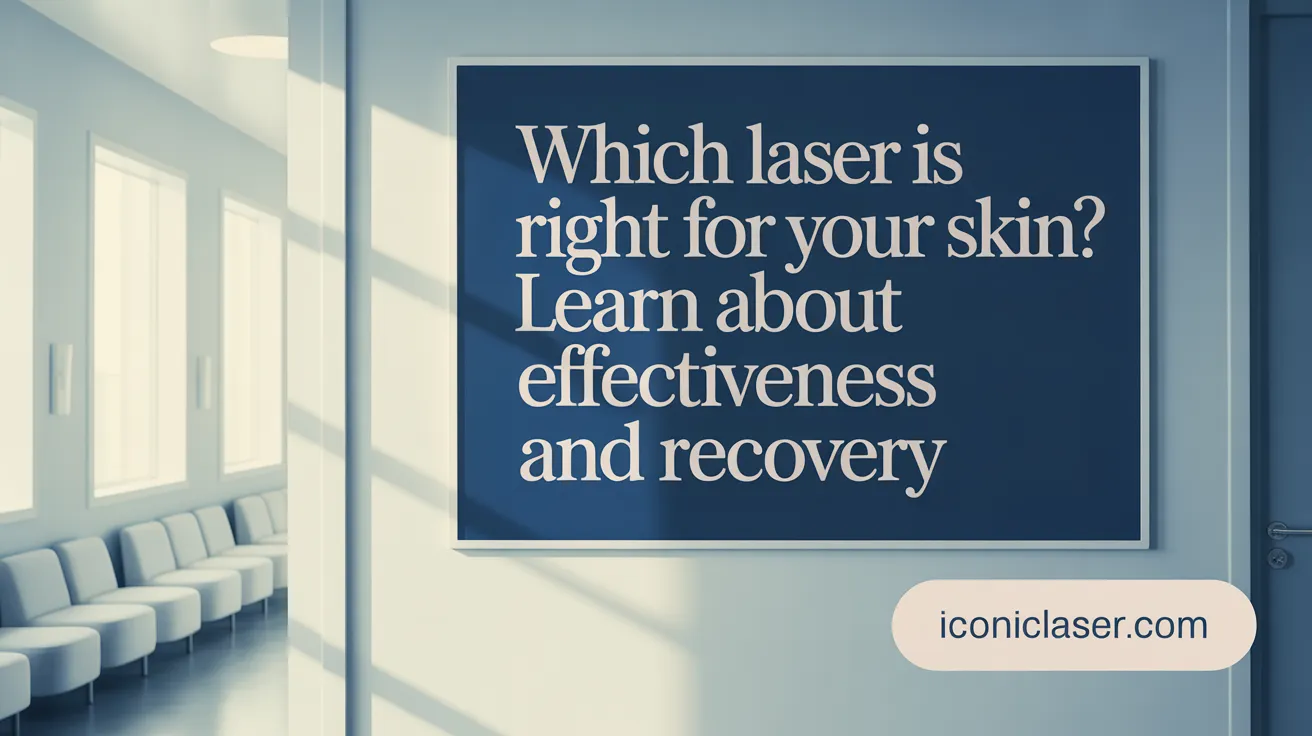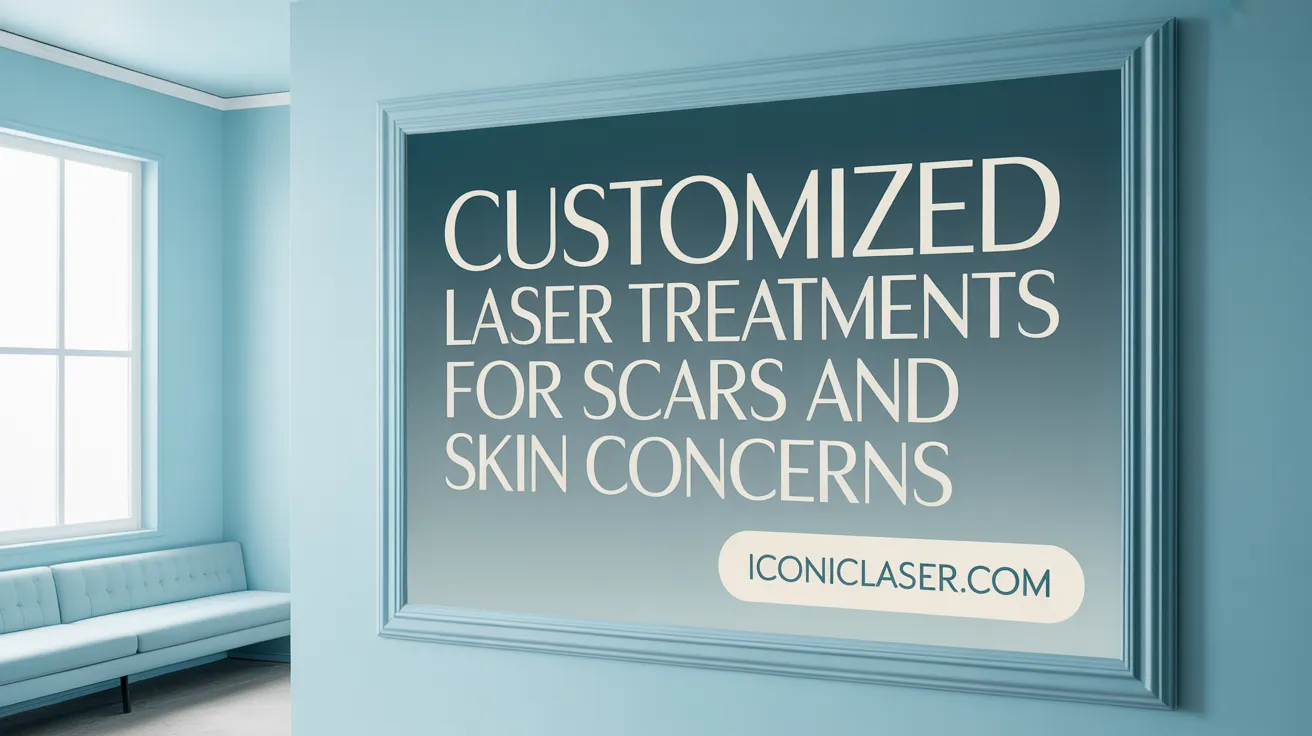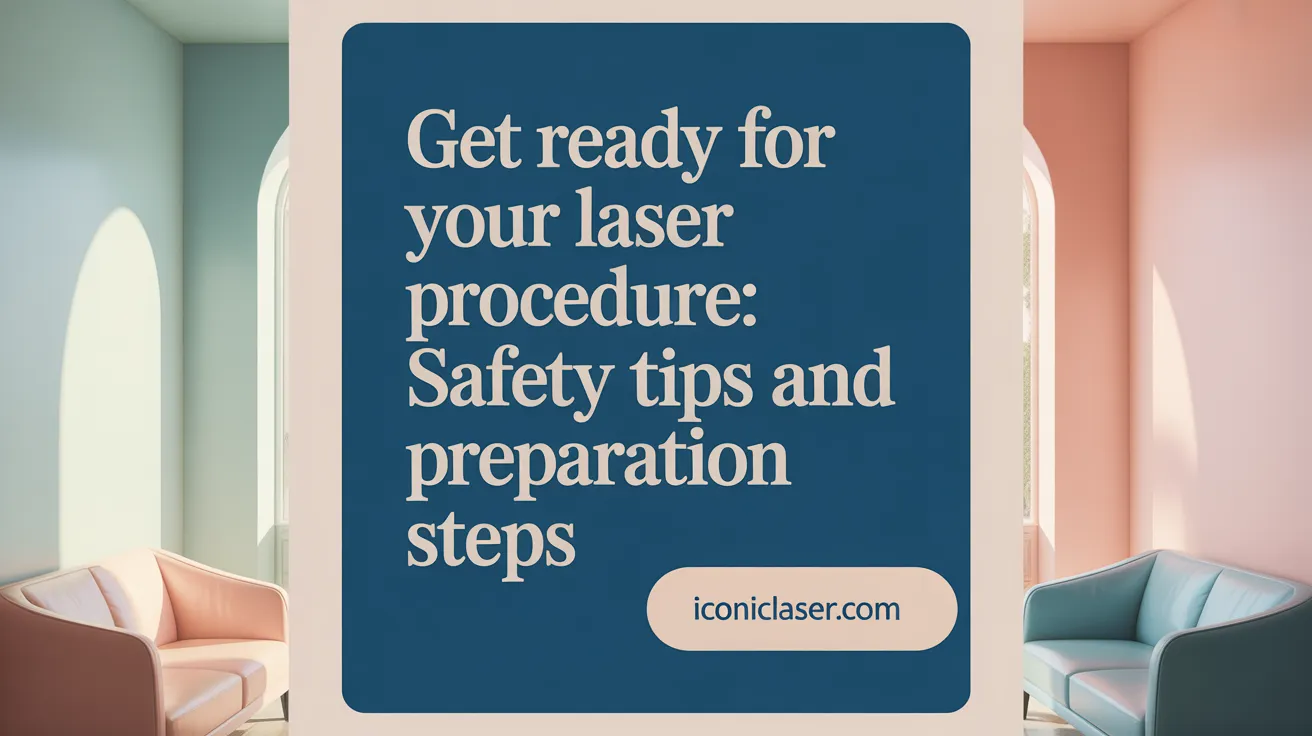Unlocking the Science Behind Laser Skin Revival
Advancements in laser technology have transformed the landscape of skin care, offering powerful solutions for scar reduction and skin rejuvenation. This article delves into the sophisticated laser treatments that not only diminish scars but also revive and restore youthful skin texture and tone. From ablative to non-ablative and fractional lasers, we explore how these techniques stimulate collagen, promote healing, and achieve long-lasting aesthetic improvements with tailored approaches to patient care and safety.
Understanding Laser Treatments: Ablative versus Non-Ablative Approaches

What are the main types of laser resurfacing?
Laser resurfacing treatments are mainly divided into two categories: ablative laser resurfacing and non-ablative laser resurfacing.
- Ablative lasers remove the outer layer of skin, targeting damaged tissue directly. Common examples include CO2 lasers in skin treatment and Erbium laser treatments. This process vaporizes the epidermis and heats the deep layers, stimulating significant collagen stimulation by lasers.
- Non-ablative lasers work beneath the skin’s surface without removing the outer layer, using focused light energy to promote collagen remodeling with less damage to the skin's barrier.
How do ablative and non-ablative lasers differ in their effect and recovery?
Ablative laser treatments provide more dramatic improvements in wrinkles, scars, and skin texture but involve a longer recovery period, often about 1-2 weeks for initial healing and up to a month for full recovery. More details can be found in laser resurfacing recovery.
Non-ablative lasers produce more subtle results, favoring patients seeking minimal downtime. Recovery can be as short as a few days, with less peeling and redness, as described in laser resurfacing and recovery times.
Typical applications for scars and skin rejuvenation
- Ablative lasers are preferred for deep acne scars, severe sun damage, and pronounced wrinkles due to their stronger tissue removal and collagen stimulation.
- Non-ablative lasers address mild to moderate wrinkles, pigmentation irregularities, and early signs of skin aging. They are suitable for patients with less downtime tolerance. See more at uses of laser resurfacing and laser skin rejuvenation.
Recovery times and side effects
- Ablative lasers commonly cause redness, swelling, itching, or discomfort that lasts longer, and carry higher risks, including infection, scarring, and pigmentation changes. For comprehensive information, refer to laser resurfacing side effects and risks of laser resurfacing.
- Non-ablative treatments typically yield milder side effects such as temporary redness and swelling.
Regardless of the type chosen, consistent sun protection post-laser treatment and skincare are vital in maintaining results and minimizing complications.
Fractional Laser Technology: Precision Healing with Reduced Downtime
What are fractional lasers and why are they widely preferred?
Fractional lasers are advanced laser devices that deliver energy in microscopic columns to treat only a fraction of the skin surface at a time. This technique spares surrounding untreated skin, promoting faster healing and reducing the typical side effects seen with traditional laser skin resurfacing.
Unlike fully ablative lasers that remove the entire outer skin layer, fractional lasers create tiny wounds that stimulate collagen production without causing extensive damage. This targeted approach allows for more controlled and safer treatment of wrinkles, scars, sun damage, and uneven pigmentation as described in fractional laser technology.
Benefits over traditional lasers
- Shorter recovery times: Healing usually occurs within 7 to 10 days, significantly less than conventional ablative lasers, detailed in recovery after laser resurfacing.
- Reduced side effects: Lower risks of prolonged redness, swelling, infection, and scarring, see laser skin resurfacing risks.
- Better safety profile: Suitable for a wider range of skin types, including some darker skin tones, as explained in laser skin treatment healing time.
- Multiple uses: Effective for both ablative and nonablative treatments, offering tailored therapies, explored in ablative vs nonablative lasers.
Applications to scars and skin texture
Fractional lasers are extensively used to improve mild to moderate acne scars, surgical scars, and skin texture irregularities. By creating microscopic treatment zones, they promote organized collagen remodeling, leading to smoother, firmer, and more even-toned skin as described in fractional laser therapy for scars.
They are also incorporated in advanced scar treatments (e.g., fractional CO2 laser) that break down excessive scar tissue while stimulating healthy skin regeneration, detailed in laser therapy for scar treatment.
Preferred usage in clinics
Due to their combination of efficacy and safety, fractional lasers have become the preferred laser resurfacing option in many dermatology and cosmetic surgery clinics. Their precision, faster healing, and flexibility for different skin concerns make them a popular choice for both practitioners and patients seeking effective rejuvenation with minimal downtime, summarized in laser skin rejuvenation treatments.
Targeted Laser Solutions for Scar Types and Skin Conditions

How do different lasers address various scar types?
Laser technology offers targeted treatment options tailored to specific scar types. Atrophic scars, characterized by depressed or pitted skin often from acne, respond particularly well to fractional ablative lasers such as CO2 and Erbium YAG. These lasers vaporize damaged skin layers and stimulate collagen production, fostering skin remodeling for a smoother texture.
Hypertrophic and keloid scars, which are raised and fibrous, benefit from pulsed dye lasers (PDL). PDL targets the blood vessels within these scars, reducing redness and improving softness and flexibility of the scar tissue. Meanwhile, non-ablative lasers provide a gentler option for mild scars and pigmentation abnormalities by promoting collagen growth without ablating the surface skin.
What skin concerns beyond scars can lasers effectively treat?
Beyond scar revision, lasers serve a broad range of dermatologic uses. They can diminish fine lines and wrinkles, lighten age spots, address sun damage, and even out uneven skin tones. Additionally, conditions such as enlarged oil glands and vascular lesions, including redness from rosacea or broken capillaries, are commonly treated with specific laser modalities. This versatility makes laser treatment a comprehensive solution for overall skin rejuvenation.
How is personalized treatment planning achieved?
Effective laser therapy begins with a thorough consultation assessing the patient's skin type, scar characteristics, and aesthetic goals. Dermatologists select laser types and settings to match the scar type, skin pigmentation, and extent of damage, ensuring both safety and optimal outcomes. Fractional laser systems—which treat microscopic columns of skin—are often preferred to minimize downtime while maximizing effectiveness. Treatment plans may include multiple sessions spaced over weeks to achieve progressive improvement.
Laser therapy thus combines advanced technology with personalized care to address diverse scar types and skin conditions, providing long-term improvements in skin appearance and texture.
Preparing for Laser Treatment: Safety and Patient Assessment

What patient factors are important before laser treatment?
A thorough medical consultation is an essential first step before any laser treatment for scars. This evaluation assesses the patient’s skin type, scar characteristics, and overall health conditions. Important considerations include any history of autoimmune or connective tissue diseases, recent use of medications such as isotretinoin, presence of keloid scars, pregnancy or breastfeeding status, previous laser treatments, and any history of facial radiation therapy or cold sores. Understanding these factors helps ensure the patient's safety and optimizes treatment outcomes by minimizing risks such as scarring or pigmentation changes.
What preparation steps improve treatment success?
Proper preparation can significantly enhance the success and safety of laser therapy. Patients are advised to avoid sun exposure and tanning for several weeks before treatment to reduce the risk of burns and pigment changes. Smoking cessation is critical, as smoking impairs healing. For those with a history of herpes simplex virus infections, antiviral medication may be prescribed to prevent flare-ups. Stopping photosensitizing medications and skincare products is recommended to reduce adverse reactions. Also, patients undergoing sedation or anesthesia should plan for transportation, as they will not be able to drive post-procedure.
Role of consultation
The initial consultation plays a pivotal role in patient education and expectation management. It allows the practitioner to evaluate contraindications and tailor the treatment plan to the individual’s needs. Open discussion about medical history, lifestyle, and goals is vital, ensuring patients understand the procedure, recovery, risks, and post-treatment care required to maximize benefits and minimize complications.
The Laser Procedure: Treatment Execution and Patient Experience
How is laser resurfacing performed?
Laser resurfacing is typically an outpatient procedure where the treatment area is numbed using local anesthesia. Depending on the procedure's depth and patient comfort, sedation may also be administered. The laser device then targets the skin, either removing the outer layers (ablative lasers) or heating the underlying skin tissue (non-ablative lasers to stimulate collagen production. The exact method and depth of treatment vary based on the chosen laser type.
Treatment duration and technique
Treatment times range from about 30 minutes to two hours, depending on the size of the area being treated and the type of laser used. Ablative lasers like CO2 lasers and erbium lasers generally have longer treatment times and more involved techniques than non-ablative lasers. Fractional lasers, which create microscopic columns on the skin, often shorten recovery and reduce side effects.
Pain management
Discomfort during the procedure depends on the treatment's intensity and laser type. For deeper ablative treatments, topical anesthetics and possibly sedation help manage pain. Non-ablative treatments usually cause less discomfort and may require only topical numbing agents. Post-treatment pain can be managed with over-the-counter pain relievers and the application of prescribed ointments.
Are multiple treatments necessary?
Multiple sessions are often needed to achieve the best results, especially with non-ablative and fractional laser treatments. Typically, sessions are spaced between 3 to 6 weeks apart to allow proper skin healing and collagen remodeling. The total number of treatments depends on the skin condition and desired outcome, with many patients benefiting from 3 to 6 sessions for optimal improvement.
Post-Treatment Care and Managing Recovery
What does recovery look like after laser therapy?
After laser skin resurfacing, the treated skin typically resembles a mild to moderate sunburn, characterized by redness, swelling, and itching. Some patients experience peeling and crusting, especially with ablative laser treatments. These signs generally appear immediately and evolve during the first days post-procedure.
The recovery periods differ based on laser type:
- Ablative lasers , such as CO2 and erbium types, often lead to visible redness and swelling for 7 to 21 days, with full healing taking up to a month.
- Non-ablative lasers cause less intense skin injury, resulting in shorter downtime, often only a few days.
During healing, sensitivity and dryness are common, requiring attentive care to support skin repair.
What aftercare is essential?
Proper wound care is critical for optimal healing and to minimize complications:
- Cleanse the treated area gently using saline or diluted vinegar cleansing solutions to keep the skin free from infection.
- Apply prescribed ointments such as petroleum jelly or antibiotic creams to maintain moisture and protect the skin surface.
- Avoid picking or scratching the peeling layers to prevent scarring.
Why is sun protection important?
The new skin is extremely vulnerable to UV damage post-treatment. Unprotected exposure can cause pigmentation changes like hyperpigmentation or hypopigmentation and delay healing. Patients should:
- Use broad-spectrum sunscreens with SPF 30 or higher consistently.
- Wear protective clothing and limit direct sun exposure for several months following the procedure, as noted under sun protection post-laser treatment.
What is the timeline for healing?
Healing starts immediately after the procedure with visible effects lasting days to weeks:
- Initial redness and swelling generally subside within 1 to 3 weeks, depending on the laser used, consistent with recovery times by laser type.
- Full recovery, including fading redness and normalization of skin tone, can take up to a month or more for ablative treatments.
- Non-ablative treatments require shorter recovery, often within a week.
Ongoing skin care and sun protection after this period help maintain and prolong treatment results.
Risks and Potential Complications of Laser Scar and Skin Treatments
What are the common risks and side effects?
Laser treatments can cause a range of side effects including inflammation, swelling, itching, and pain. Acne flare-ups and infections are also possible after the procedure. Changes in skin color such as hyperpigmentation (darkening) or hypopigmentation (lightening) frequently occur, especially with ablative laser types. Other side effects include milia (tiny white bumps) and reactivation of cold sores. Though rare, scarring is a potential complication, more often linked to aggressive ablative lasers.
Are certain skin types at higher risk?
Individuals with darker skin tones face a higher chance of pigmentation changes following laser treatments. Due to increased melanin, their skin is more susceptible to both hyper- and hypopigmentation. For this reason, treatment laser types and settings must be carefully selected and adjusted. Close monitoring during and after therapy helps minimize adverse effects and optimize outcomes (Skin type considerations).
How can side effects be managed?
Post-procedure care is critical for managing side effects. This includes keeping the skin moist with ointments, avoiding direct sun exposure, and applying broad-spectrum sunscreens with SPF 30 or higher. Using antiviral medications may be necessary to prevent herpes virus flare-ups in those with cold sore history. Managing discomfort can involve ice packs and over-the-counter pain relievers. Following the dermatologist’s instructions strictly helps reduce complications and speeds healing (Recovery after laser resurfacing).
What rare complications can occur?
Though uncommon, rare complications include prolonged redness, excessive swelling, scarring, and unusual pigmentation changes. Individuals with certain conditions like autoimmune diseases, recent isotretinoin use, or a history of keloid scars may have increased risks (Contraindications for laser resurfacing. Thorough pre-treatment screening helps identify these risks to avoid complications.
The overall risk profile varies by laser type, patient skin characteristics, and provider expertise. Ablative lasers while more effective for deep scars and wrinkles, tend to produce more side effects and require careful handling. Non-ablative and fractional lasers offer gentler options with shorter recovery times and fewer risks, making them widely preferred for many patients.
Long-Term Benefits and Maintenance of Laser Treatments
How long do laser treatment results last?
Laser treatments offer lasting improvements in skin texture, tone, and scar appearance, often extending over several years. These effects arise from collagen remodeling and rejuvenated skin layers resulting from both ablative and nonablative laser procedures. However, natural aging and continued sun exposure can gradually diminish these benefits. As the skin undergoes the usual aging process, new wrinkles or pigmentation issues may appear, potentially requiring booster or repeat sessions to sustain the desired youthful appearance.
What maintenance is necessary post-treatment?
Maintaining the results of laser therapy requires consistent care. Sun protection is critical—patients should regularly apply broad-spectrum sunscreens with SPF 30 or higher and avoid excessive ultraviolet exposure. Moisturizing the skin helps preserve the skin barrier and supports healing. Additionally, avoiding harsh skin products and irritants minimizes the risk of pigmentation changes or inflammation. Following a dermatologist's skincare recommendations and scheduling periodic follow-ups optimize long-term treatment outcomes.
How do laser treatments impact patient well-being?
Beyond the physical skin improvements, laser treatments provide significant emotional and functional benefits. Many patients experience enhanced self-confidence as scars, wrinkles, or discolorations fade, leading to improved social interactions and emotional well-being. For individuals with symptomatic scars, laser therapy can reduce associated pain, itching, or discomfort, thereby improving quality of life. These holistic effects underscore the value of laser skin treatments in both aesthetic and therapeutic domains.
Emerging Technologies and Multimodal Laser Therapies in Scar Management
What are some advanced laser technologies for scar treatment?
The field of scar management has seen significant advancements with the introduction of sophisticated laser devices. These include fractional CO2 lasers equipped with ultra-pulsed technology that penetrate deeply to break down scar tissue and stimulate new collagen formation. Additionally, pulsed dye lasers (PDL) target vascular components of scars, while Nd:YAG and diode lasers effectively treat atrophic scars by promoting collagen synthesis. Combining fractional ablative and non-ablative systems allows clinicians to tailor treatment depth and intensity, optimizing results based on scar type and patient skin characteristics.
How do combination treatments improve outcomes?
Using combination therapies, such as laser treatment paired with radiofrequency microneedling or topical agents, enhances the overall effectiveness of scar revision. These multimodal approaches facilitate collagen remodeling more efficiently, help normalize abnormal blood vessels, and address pigmentation irregularities common in scarred skin. This integrated strategy leads to better scar flattening, improved texture, and reduced redness, providing patients with superior aesthetic and functional outcomes compared to single-modality treatments.
Why is multidisciplinary care important?
Scar management can be complex, requiring input from various healthcare professionals. A multidisciplinary team—including dermatologists, plastic surgeons, nurses, and pharmacists—ensures comprehensive care. This collaboration allows personalized treatment planning that considers patient history, scar characteristics, and potential contraindications. Moreover, the team can effectively monitor and manage side effects, educate patients on pre- and post-treatment care, and adapt therapies for optimal safety and efficacy. Such coordinated care enhances patient satisfaction and treatment success.
Embracing the Future of Skin Revival with Laser Innovation
Laser scar removal and skin revival therapies have advanced significantly, offering patients customized, effective, and minimally invasive solutions for complex skin concerns. With a variety of laser modalities—from precise fractional ablative lasers to gentle non-ablative options—treatment can be tailored to individual scar types and skin conditions. Success depends on thorough patient assessment, skilled application, and diligent post-care, with long-lasting results that improve both appearance and quality of life. As technologies evolve and combination approaches optimize outcomes, laser treatments are set to remain at the forefront of cosmetic and reconstructive dermatology, empowering patients with renewed confidence and healthier skin.
